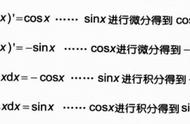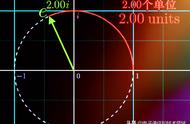,并用快速傅里叶变换(fft)检查它是否正确。
import matplotlib.pyplot as plt
y_real = y[:, :signal_length]
y_imag = y[:, signal_length:]
tvals = np.arange(signal_length).reshape([-1, 1])
freqs = np.arange(signal_length).reshape([1, -1])
arg_vals = 2 * np.pi * tvals * freqs / signal_length
sinusoids = (y_real * np.cos(arg_vals) - y_imag * np.sin(arg_vals)) / signal_length
reconstructed_signal = np.sum(sinusoids, axis=1)
print('rmse:', np.sqrt(np.mean((x - reconstructed_signal)**2)))
plt.subplot(2, 1, 1)
plt.plot(x[0,:])
plt.title('Original signal')
plt.subplot(2, 1, 2)
plt.plot(reconstructed_signal)
plt.title('Signal reconstructed from sinusoids after DFT')
plt.tight_layout()
plt.show()
rmse: 2.3243522568191728e-15
得到的这个微小误差值可以证明,计算的结果是我们想要的。
- 另一种方法是重构信号:
import matplotlib.pyplot as plt
y_real = y[:, :signal_length]
y_imag = y[:, signal_length:]
tvals = np.arange(signal_length).reshape([-1, 1])
freqs = np.arange(signal_length).reshape([1, -1])
arg_vals = 2 * np.pi * tvals * freqs / signal_length
sinusoids = (y_real * np.cos(arg_vals) - y_imag * np.sin(arg_vals)) / signal_length
reconstructed_signal = np.sum(sinusoids, axis=1)
print('rmse:', np.sqrt(np.mean((x - reconstructed_signal)**2)))
plt.subplot(2, 1, 1)
plt.plot(x[0,:])
plt.title('Original signal')
plt.subplot(2, 1, 2)
plt.plot(reconstructed_signal)
plt.title('Signal reconstructed from sinusoids after DFT')
plt.tight_layout()
plt.show()
rmse: 2.3243522568191728e-15

最后可以看到,DFT后从正弦信号重建的信号和原始信号能够很好地重合。
通过梯度下降学习傅里叶变换现在就到了让神经网络真正来学习的部分,这一步就不需要向之前那样预先计算权重值了。
首先,要用FFT来训练神经网络学习离散傅里叶变换:
import tensorflow as tf
signal_length = 32
# Initialise weight vector to train:
W_learned = tf.Variable(np.random.random([signal_length, 2 * signal_length]) - 0.5)
# Expected weights, for comparison:
W_expected = create_fourier_weights(signal_length)
losses = []
rmses = []
for i in range(1000):
# Generate a random signal each iteration:
x = np.random.random([1, signal_length]) - 0.5
# Compute the expected result using the FFT:
fft = np.fft.fft(x)
y_true = np.hstack([fft.real, fft.imag])
with tf.GradientTape() as tape:
y_pred = tf.matmul(x, W_learned)
loss = tf.reduce_sum(tf.square(y_pred - y_true))
# Train weights, via gradient descent:
W_gradient = tape.gradient(loss, W_learned)
W_learned = tf.Variable(W_learned - 0.1 * W_gradient)
losses.append(loss)
rmses.append(np.sqrt(np.mean((W_learned - W_expected)**2)))
Final loss value 1.6738563548424711e-09
Final weights' rmse value 3.1525832404710523e-06


得出结果如上,这证实了神经网络确实能够学习离散傅里叶变换。
训练网络学习DFT除了用快速傅里叶变化的方法,还可以通过网络来重建输入信号来学习DFT。(类似于autoencoders自编码器)。
自编码器(autoencoder, AE)是一类在半监督学习和非监督学习中使用的人工神经网络(Artificial Neural Networks, ANNs),其功能是通过将输入信息作为学习目标,对输入信息进行表征学习(representation learning)。
W_learned = tf.Variable(np.random.random([signal_length, 2 * signal_length]) - 0.5)
tvals = np.arange(signal_length).reshape([-1, 1])
freqs = np.arange(signal_length).reshape([1, -1])
arg_vals = 2 * np.pi * tvals * freqs / signal_length
cos_vals = tf.cos(arg_vals) / signal_length
sin_vals = tf.sin(arg_vals) / signal_length
losses = []
rmses = []
for i in range(10000):
x = np.random.random([1, signal_length]) - 0.5
with tf.GradientTape() as tape:
y_pred = tf.matmul(x, W_learned)
y_real = y_pred[:, 0:signal_length]
y_imag = y_pred[:, signal_length:]
sinusoids = y_real * cos_vals - y_imag * sin_vals
reconstructed_signal = tf.reduce_sum(sinusoids, axis=1)
loss = tf.reduce_sum(tf.square(x - reconstructed_signal))
W_gradient = tape.gradient(loss, W_learned)
W_learned = tf.Variable(W_learned - 0.5 * W_gradient)
losses.append(loss)
rmses.append(np.sqrt(np.mean((W_learned - W_expected)**2)))
Final loss value 4.161919455121241e-22
Final weights' rmse value 0.20243339269590094
















